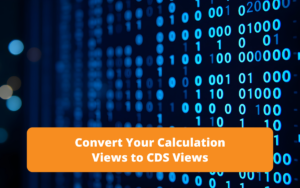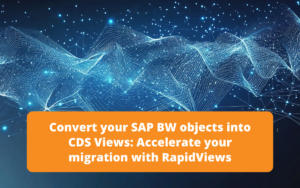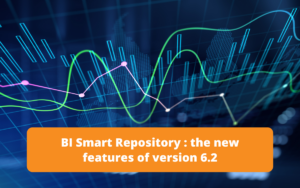Introduction
This article details a use case of SAP Data Warehouse Cloud to create a financial statement with master data based on SAP FI-CO. SAP Data Warehouse Cloud is integrated with the SAP HANA Cloud Services Platform and offers the ability to model and govern data warehouses in the cloud.
This article details a use case for SAP DWC to create a financial statement with master data based on SAP‘s FI-CO module.
For this example, we will deploy the profit and loss statement, a mandatory accounting document for companies in the same way as the balance sheet. The profit and loss account presents all the income and expenses of a company during an accounting period.
The data cube (or datamart) to be built in SAP DWC must be based on all the accounting entries recorded in the general ledger.
The accounting documents will constitute the de facto view of our datamart, to which will be attached dimensional views such as attributes related to G/L accounts, account hierarchy, companies, etc.
Once the datamart is created in SAP DWC, we will format the income statement using the SAP HANA Cloud Services reporting application : SAP Analytics Cloud module FI-CO from SAP.
SAP DWC - The factual view of accounting entries
The RapidViews F_GL_DETAILS_DV factual view contains all the detail in the general ledger that we need to construct the income statement.
The factual view developed in SAP DWC contains the data from tables BKPF and FAGLFLEXA. Depending on the version of SAP installed, we could have used table BSEG for SAP ECC, and table ACDOCA for SAP S/4HANA. All of the above tables contain accounting entries from the SAP FI-CO module.
Here is an overview of the factual view modelling in SAP DWC :
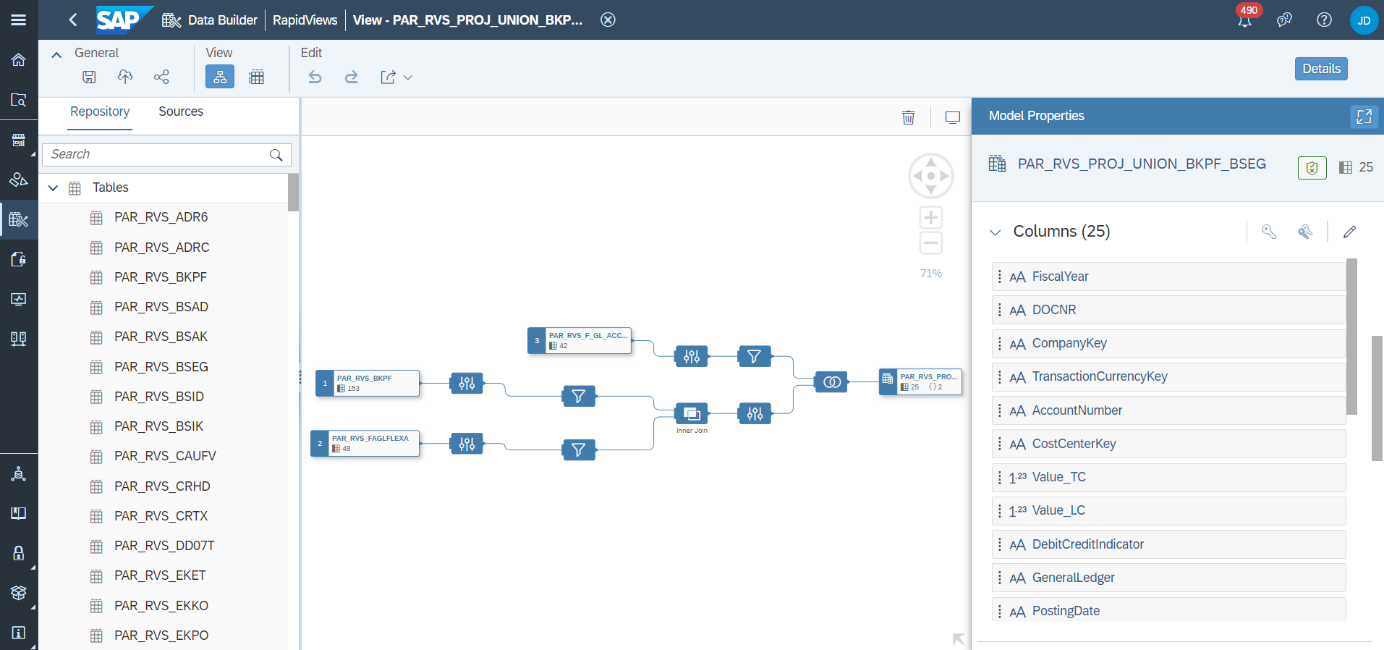
The join between BKPF and FAGLFLEXA allows us to link the header data of the accounting documents to the items.
Beyond the modelling structure contained in the RapidViews view, the other added value of this view lies in the addition of a semantic layer above the SAP technical terms. The semantics implemented give a functional meaning to the manipulated objects, and thus considerably facilitate developments at the datamart and report level.
In the image above, the semantics are visible in the right-hand panel of the screen. Here you can see all the objects needed to create the profit and loss account, such as tax years, companies, G/L accounts, reconciliation dates, local currency values, etc.
Subscribe to the Rapid Views Newsletter !
Stay up to date with our latest blog posts, upcoming webinars and news!
SAP DWC - Datamart
The datamart, or data cube, is a view that calls on the previously created factual view, to which we will attach dimensions containing the attributes of the objects to be manipulated (the account hierarchy, company names, cost centre designations, etc.).
All the dimensions we need are already developed and contained in the RapidViews FI-CO view package.
We will use, among others, the dimension DIM_COMPANY_DV for company attributes, the dimension DIM_P_AND_L_STATEMENT_DV for the account hierarchy, and the dimension DIM_FD_TYPE_DV for displaying document types.
The following is an excerpt from the RapidViews datamart modeling in SAP DWC :
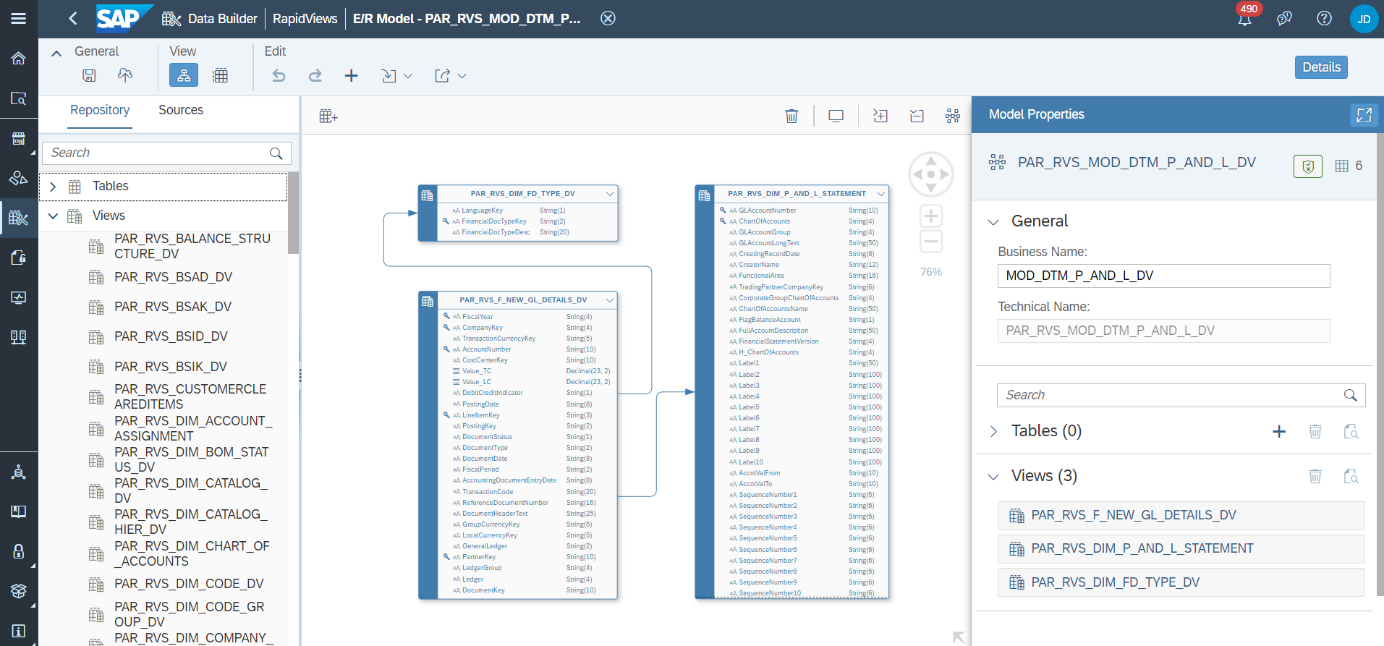
SAC - Report
The datamart developed in the SAP Data Warehouse Cloud can now be used in the SAP Analytics Cloud. Below is a representation of the profit and loss statement :
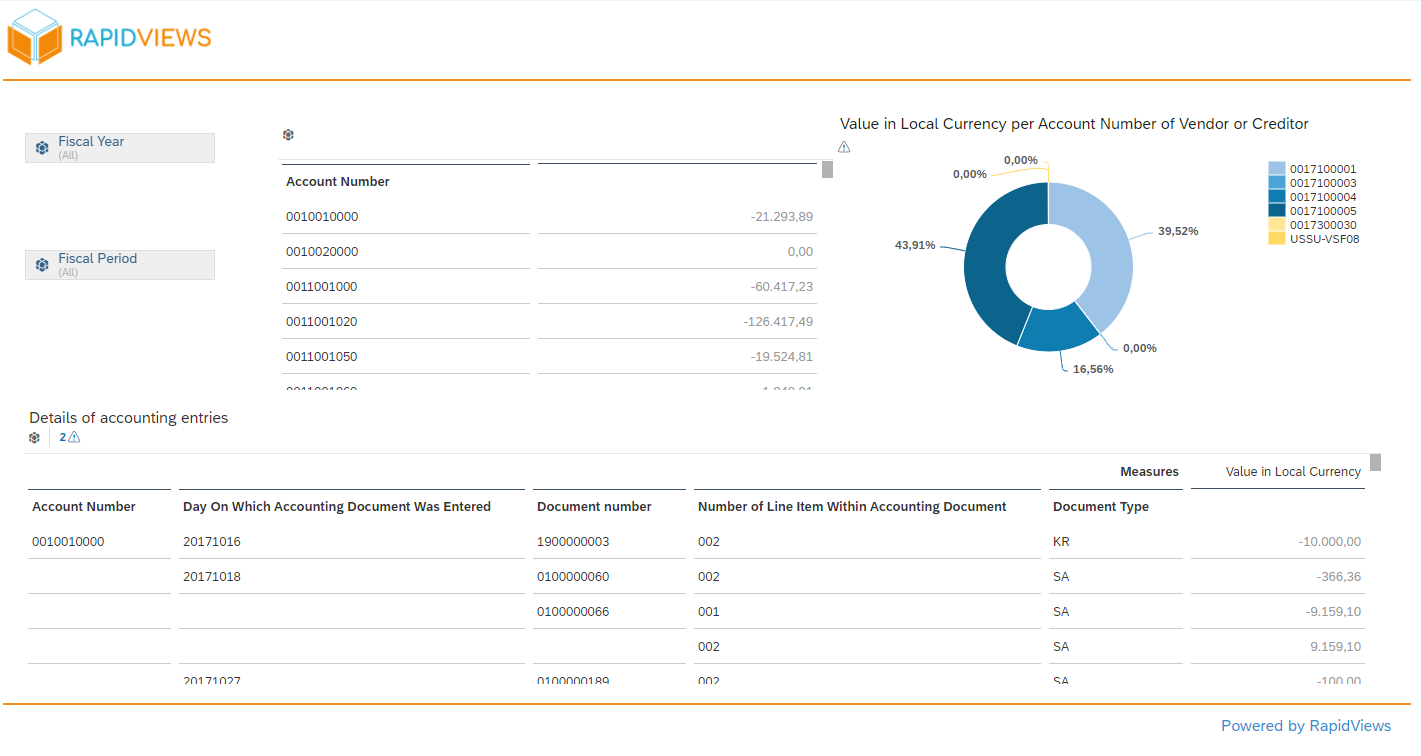
In the centre we can see the balances of the profit and loss accounts, and at the bottom the detail by accounting documents allowing a more in-depth analysis.
On the left, filters are available to the user allowing him to filter on an accounting year or a period.
Conclusion
The RapidViews datamart based on the general ledger detail of the general ledger allows the deployment of financial statements on SAP Analytics Cloud, such as the balance sheet or the income statement.
This datamart is integrated into the FI-CO package of RapidViews, which contains about twenty other datamarts, used for other analyses: accounts receivable, accounts payable, bank accounting, fixed asset accounting, or analyses linked to management control by cost centre, profit centre or cost of goods sold.
